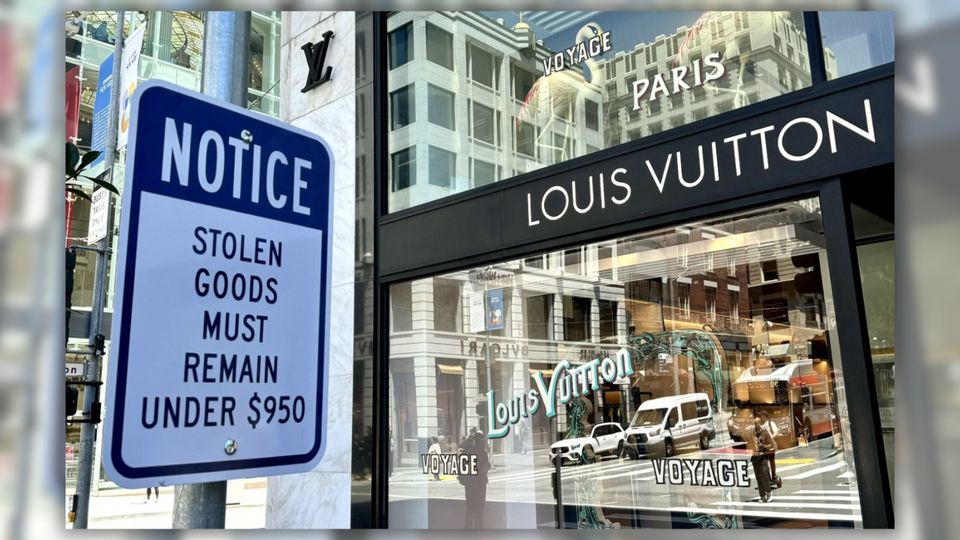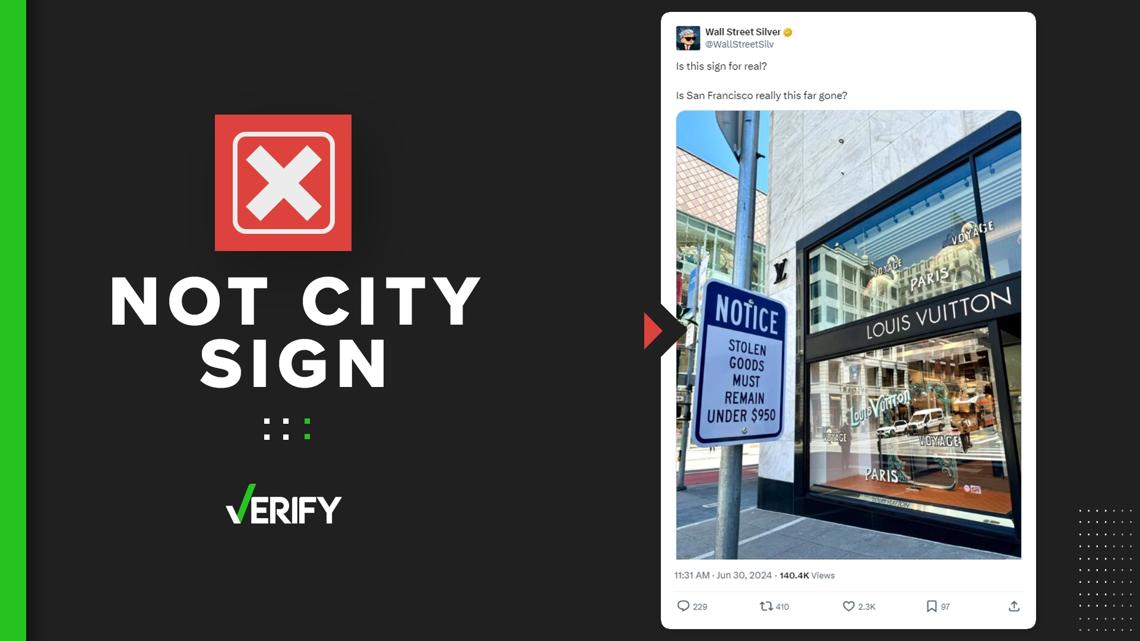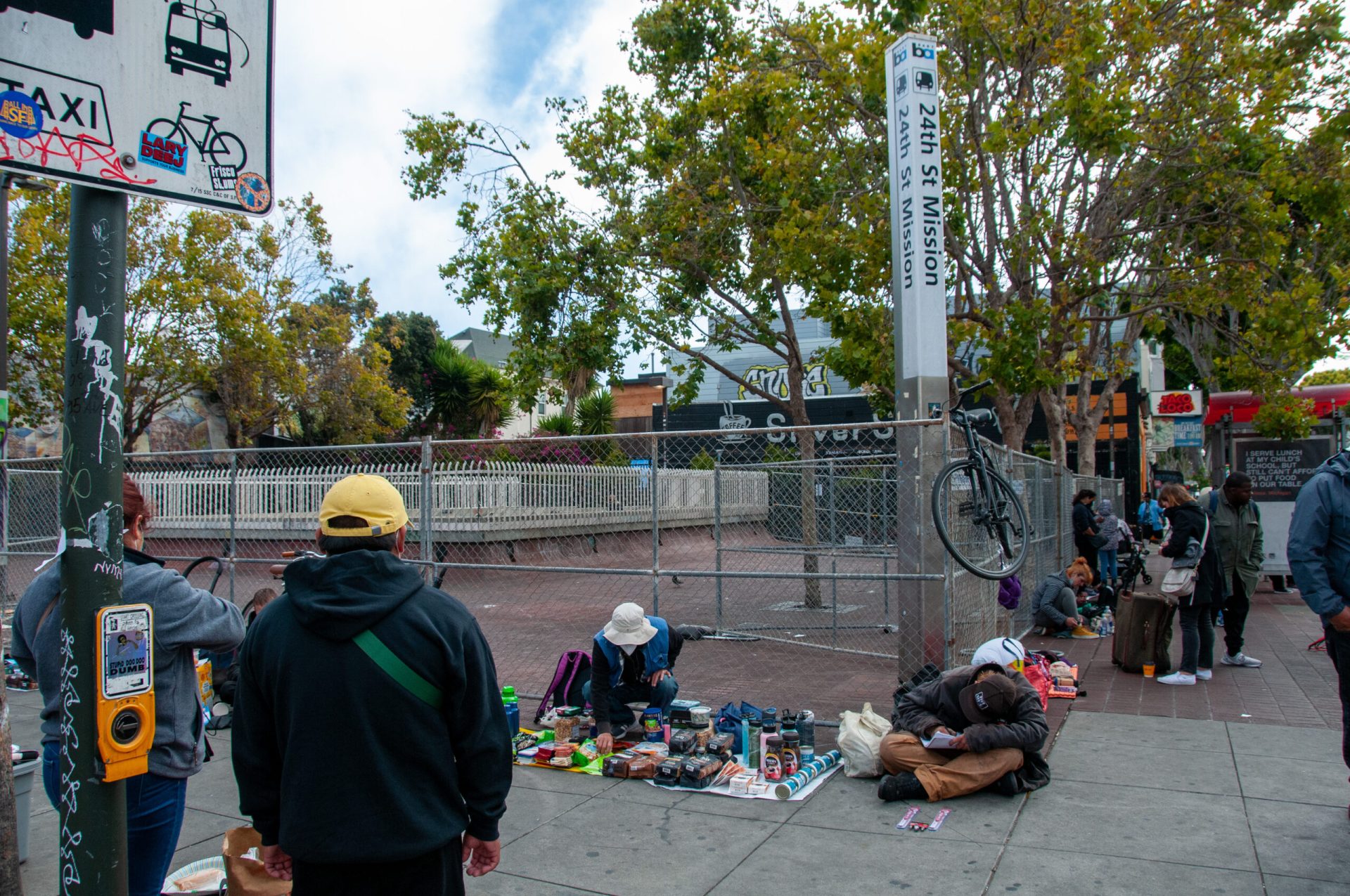Spotting San Francisco Stolen Goods Signs: A Comprehensive Guide
San Francisco stolen goods signs are a growing concern for residents and visitors alike. In a city known for its vibrant culture and progressive policies, the issue of stolen goods has emerged as a significant challenge. This problem not only affects businesses but also poses risks to individuals who might inadvertently purchase stolen items. Understanding the signs and knowing how to protect yourself is crucial in navigating this urban landscape.
San Francisco's bustling streets and diverse neighborhoods make it an attractive target for theft rings. From electronics to designer clothing, stolen goods are often sold in plain sight, sometimes disguised as legitimate merchandise. Recognizing the warning signs can help you avoid becoming part of this illicit trade.
This guide will delve into the nuances of identifying stolen goods, exploring the legal implications, and offering practical advice to safeguard both individuals and businesses. Whether you're a local resident or a traveler, this article aims to equip you with the knowledge to stay safe and informed.
Read also:Discover The Remarkable Life And Legacy Of Angela Lansbury A True Hollywood Icon
Table of Contents
- Introduction to San Francisco Stolen Goods Signs
- History of Stolen Goods in San Francisco
- Common Signs of Stolen Goods
- Legal Implications of Buying Stolen Goods
- Prevention Tips for Individuals
- Strategies for Businesses
- Community Efforts to Combat Stolen Goods
- Data and Statistics on Stolen Goods
- Resources for Reporting Stolen Goods
- Conclusion and Call to Action
Introduction to San Francisco Stolen Goods Signs
San Francisco, a city renowned for its innovation and cultural richness, faces unique challenges in combating the trade of stolen goods. Understanding San Francisco stolen goods signs is essential for anyone living in or visiting the city. These signs can range from suspiciously low prices to unusual sales locations, all of which warrant attention.
By familiarizing yourself with these indicators, you can play a proactive role in reducing the demand for stolen goods. This section will outline the most common warning signs and explain why they matter in the broader context of urban safety.
Why Stolen Goods Are a Problem
The proliferation of stolen goods in San Francisco is not just an economic issue; it also affects public safety and trust within communities. When stolen goods are sold openly, it undermines the integrity of local markets and can lead to increased crime rates. Recognizing the signs early can help mitigate these effects.
History of Stolen Goods in San Francisco
The history of stolen goods in San Francisco dates back decades, with the city's unique geography and population density contributing to the problem. Over time, law enforcement agencies have implemented various strategies to combat this issue, but challenges persist.
Key historical milestones include the rise of organized theft rings in the 1980s and the subsequent crackdowns by local authorities. Despite these efforts, the problem has evolved, adapting to new technologies and market trends.
Evolution of the Problem
Today, the trade of stolen goods in San Francisco is more sophisticated than ever. From online marketplaces to street vendors, the avenues for selling stolen items have expanded, making it harder for authorities to track and intercept illegal transactions.
Read also:Henderson Energy And Nutrition Unlocking The Power Of Optimal Health
Common Signs of Stolen Goods
Identifying San Francisco stolen goods signs requires a keen eye and an understanding of what to look for. Here are some of the most common indicators:
- Unusually Low Prices: If an item is being sold significantly below its market value, it could be a red flag.
- Unofficial Sales Locations: Be wary of vendors operating outside of regulated markets or malls.
- Lack of Receipts: Legitimate sellers typically provide receipts or invoices. Absence of these documents may indicate foul play.
- Multiple High-Value Items: Sellers offering a large quantity of expensive items, such as electronics or jewelry, without proper documentation should raise suspicion.
Visual Indicators
Visually, stolen goods might show signs of tampering, such as missing serial numbers or damaged packaging. Pay attention to these details when evaluating a potential purchase.
Legal Implications of Buying Stolen Goods
Purchasing stolen goods, even unknowingly, can have serious legal consequences. Under California law, buying or receiving stolen property is a criminal offense punishable by fines and imprisonment. Understanding these legal implications is crucial for avoiding unintended legal trouble.
Law enforcement agencies in San Francisco actively pursue cases involving stolen goods, making it important for consumers to exercise due diligence when making purchases.
Penalties for Offenders
Penalties for buying stolen goods can include fines up to $1,000 and/or imprisonment for up to six months. Repeat offenders may face harsher penalties, underscoring the seriousness of the offense.
Prevention Tips for Individuals
Protecting yourself from inadvertently purchasing stolen goods involves a combination of vigilance and smart decision-making. Here are some practical tips:
- Do Your Research: Check the market value of items you intend to purchase and compare prices.
- Verify Sellers: Ensure the seller is legitimate by checking reviews and credentials.
- Ask for Documentation: Always request receipts or invoices to verify the authenticity of the item.
- Inspect Items Carefully: Look for signs of tampering or irregularities in packaging.
Staying Informed
Staying informed about the latest trends in stolen goods is vital. Subscribe to local news outlets and follow updates from law enforcement agencies to remain aware of emerging threats.
Strategies for Businesses
Businesses in San Francisco also play a critical role in combating the trade of stolen goods. Implementing robust security measures and educating employees can help prevent stolen items from entering the supply chain.
Key strategies include regular audits of inventory, collaboration with law enforcement, and training programs for staff. These efforts contribute to a safer business environment and enhance consumer trust.
Collaboration with Authorities
Building strong relationships with local law enforcement agencies can provide businesses with valuable insights and support in addressing stolen goods issues. Regular communication and cooperation are essential components of an effective strategy.
Community Efforts to Combat Stolen Goods
Community involvement is a powerful tool in the fight against stolen goods. Grassroots initiatives, neighborhood watch programs, and public awareness campaigns can all contribute to reducing the prevalence of stolen goods in San Francisco.
Residents are encouraged to report suspicious activities and participate in community meetings to discuss solutions. These collective efforts foster a safer and more secure urban environment.
Examples of Successful Initiatives
Several neighborhoods in San Francisco have successfully implemented community-driven programs to combat stolen goods. These initiatives often involve collaboration between residents, businesses, and law enforcement, demonstrating the power of united action.
Data and Statistics on Stolen Goods
According to recent data, stolen goods account for a significant portion of illegal activities in San Francisco. Statistics from the San Francisco Police Department reveal that theft-related crimes have increased by 15% over the past year.
These numbers highlight the urgency of addressing this issue and underscore the need for comprehensive strategies to combat stolen goods. By analyzing trends and patterns, law enforcement agencies can develop more effective interventions.
Key Findings
Key findings from recent studies include the growing prevalence of online sales of stolen goods and the increasing sophistication of theft rings. These insights inform policy decisions and guide resource allocation in combating this challenge.
Resources for Reporting Stolen Goods
Several resources are available for reporting suspected stolen goods in San Francisco. The San Francisco Police Department provides an online portal for submitting tips, while local community organizations offer additional support and guidance.
Residents are encouraged to utilize these resources to report suspicious activities and contribute to the overall safety of the community. By working together, we can create a safer and more secure environment for all.
How to Report Suspicious Activity
Reporting suspicious activity is simple and can be done anonymously through the SFPD's online portal or by contacting local community organizations. Providing detailed information, such as location and description of the activity, can greatly assist law enforcement efforts.
Conclusion and Call to Action
In conclusion, understanding San Francisco stolen goods signs is essential for maintaining a safe and secure community. By recognizing the warning signs and taking proactive steps, individuals and businesses can play a vital role in reducing the demand for stolen goods.
We invite you to share this article with others and encourage them to stay informed about this important issue. Together, we can make a difference in combating the trade of stolen goods in San Francisco. Don't forget to explore other articles on our site for more valuable insights and resources. Your participation matters!


